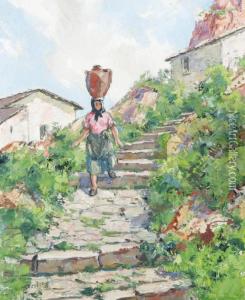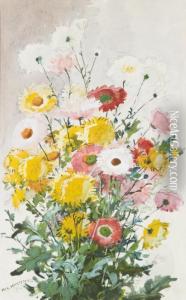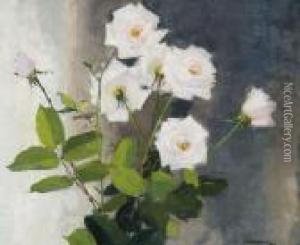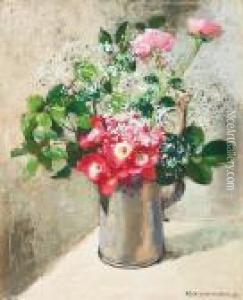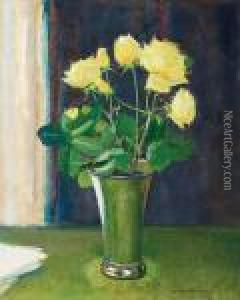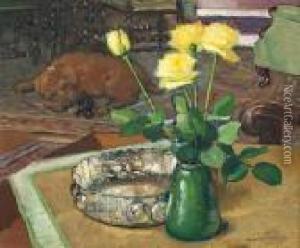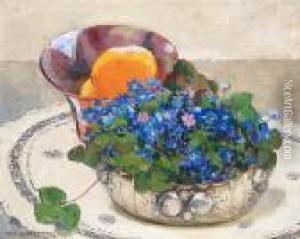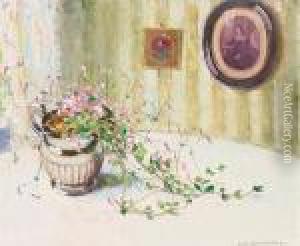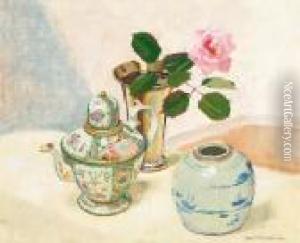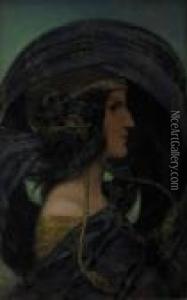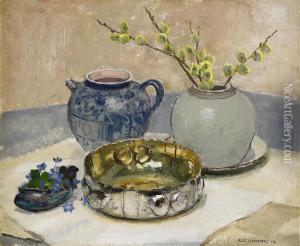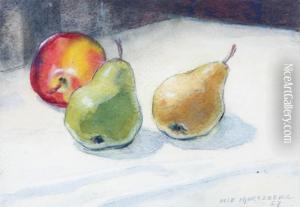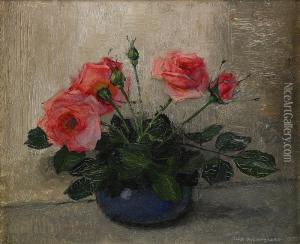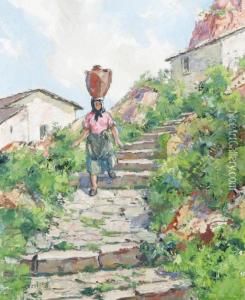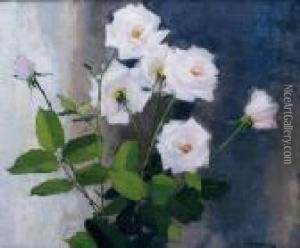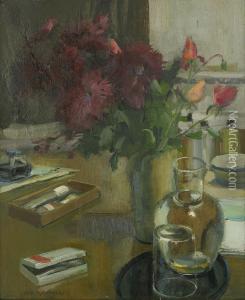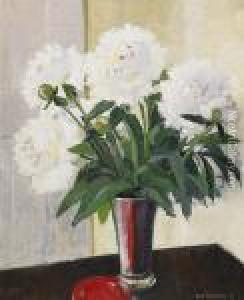Olle Hjortzberg Paintings
Olle Hjortzberg was a notable Swedish painter and illustrator, recognized for his contributions to religious art and his role as a professor at the Royal Swedish Academy of Fine Arts. Born Olof August Hjortzberg on January 22, 1872, in Arboga, Sweden, he grew up in a period where Swedish art was transitioning and seeking new directions. Hjortzberg was influenced by the National Romantic style, which was prevalent in the late 19th and early 20th centuries.
Educated at the Royal Swedish Academy of Arts in Stockholm, Hjortzberg was part of an artistic community that included many influential Swedish artists of the time. His education and natural talent laid the foundation for a career that would span several decades. Hjortzberg was particularly known for his frescoes and stained glass designs, which can be found in churches across Sweden, reflecting his deep interest in spiritual and religious themes.
In addition to his ecclesiastical works, Hjortzberg also created illustrations for books and magazines. His style was characterized by a delicate use of color and a harmonious blend of symbolism and realism. His illustrations often carried a lyrical quality, resonating with the Art Nouveau movement, though he maintained a distinct personal style.
Hjortzberg's reputation as an artist was complemented by his role as an educator. In 1911, he was appointed a professor at the Royal Swedish Academy of Fine Arts, where he influenced a new generation of Swedish artists. His teaching career was marked by a dedication to nurturing the individual talents of his students while encouraging innovation and experimentation.
Throughout his life, Hjortzberg participated in numerous exhibitions, both in Sweden and abroad, and his work received critical acclaim. He was awarded several prestigious awards and honors for his artistic achievements, including membership in the Royal Academy of Arts.
Olle Hjortzberg passed away on November 30, 1959, leaving behind a legacy of artistic works that continue to be appreciated for their beauty and spiritual depth. His contributions to Swedish art, particularly in the realm of religious painting, remain influential and are a testament to his skill and devotion to his craft.
